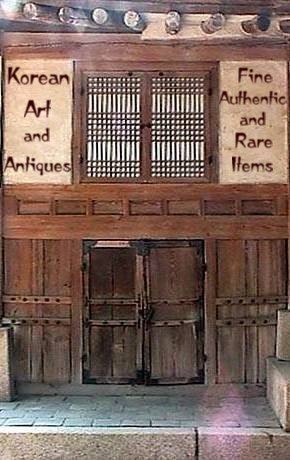One-Of-A-Kind, Fine Korean Lady's Dagger with Exquisite Floral Design
browse these categories for related items...
Directory: Antiques: Regional Art: Asian: Korean: Metalwork: Pre 1900: Item # 1480970
Directory: Antiques: Regional Art: Asian: Korean: Metalwork: Pre 1900: Item # 1480970
Please refer to our stock # 1514 when inquiring.
Korean Art and Antiques
View Seller Profile
400 West 43rd Street
New York, NY 10036
917-675-1369
Guest Book
View Seller Profile
400 West 43rd Street
New York, NY 10036
917-675-1369
Guest Book
SOLD
SOLD
This is a truly one-of-a-kind masterpiece of exquisite beauty that rewards long and repeated viewing. We have never seen a silver Joseon Dynasty lady's dagger (eunjangdo) with engraving entirely in a floral motif like this. The details are stunningly rendered along every millimeter of this fine work of art. Beyond the beauty of the luxurious surface, there is a deeper and thoughtful design that incorporates symbolism from ancient history. It is engraved with akebia mountain root (symbol of good health), lotus blossom (symbol of rebirth, because the lotus rises above the muck of the pond to show its face to the Sun), azalea (symbol of beauty and the "city flower" chosen by many of Korea's cities), peony (symbol of abundance because of its copious petals), banana leaf (the huge leaves are considered auspicious), plum blossoms (symbol of courage because they bloom before winter is not quite finished), and Korea's mugunghhwa national flower, the rose of sharon. Orchids are an ancient Korean symbol of purity, modesty, and virtue. The rock symbolizes eternity, so the combination of orchids and rock have the meaning of eternal adherence to principle. The dragonfly here is a symbol of purity. The small band in the middle has a key fret thunder pattern. Eunjangdo were worn by women of rank as a chest pendant and a symbol of their social standing. This dagger also served as a tool to save women from personal humiliation or peril, not by attacking an assailant but by killing themselves, under the Confucian moral obligation of medieval Korea 'to remain faithful to one spouse'. The silver chopsticks were used to determine the safety of food, as they would turn color if poison was present. 6 inches, 15 cm.
This is a truly one-of-a-kind masterpiece of exquisite beauty that rewards long and repeated viewing. We have never seen a silver Joseon Dynasty lady's dagger (eunjangdo) with engraving entirely in a floral motif like this. The details are stunningly rendered along every millimeter of this fine work of art. Beyond the beauty of the luxurious surface, there is a deeper and thoughtful design that incorporates symbolism from ancient history. It is engraved with akebia mountain root (symbol of good health), lotus blossom (symbol of rebirth, because the lotus rises above the muck of the pond to show its face to the Sun), azalea (symbol of beauty and the "city flower" chosen by many of Korea's cities), peony (symbol of abundance because of its copious petals), banana leaf (the huge leaves are considered auspicious), plum blossoms (symbol of courage because they bloom before winter is not quite finished), and Korea's mugunghhwa national flower, the rose of sharon. Orchids are an ancient Korean symbol of purity, modesty, and virtue. The rock symbolizes eternity, so the combination of orchids and rock have the meaning of eternal adherence to principle. The dragonfly here is a symbol of purity. The small band in the middle has a key fret thunder pattern. Eunjangdo were worn by women of rank as a chest pendant and a symbol of their social standing. This dagger also served as a tool to save women from personal humiliation or peril, not by attacking an assailant but by killing themselves, under the Confucian moral obligation of medieval Korea 'to remain faithful to one spouse'. The silver chopsticks were used to determine the safety of food, as they would turn color if poison was present. 6 inches, 15 cm.






